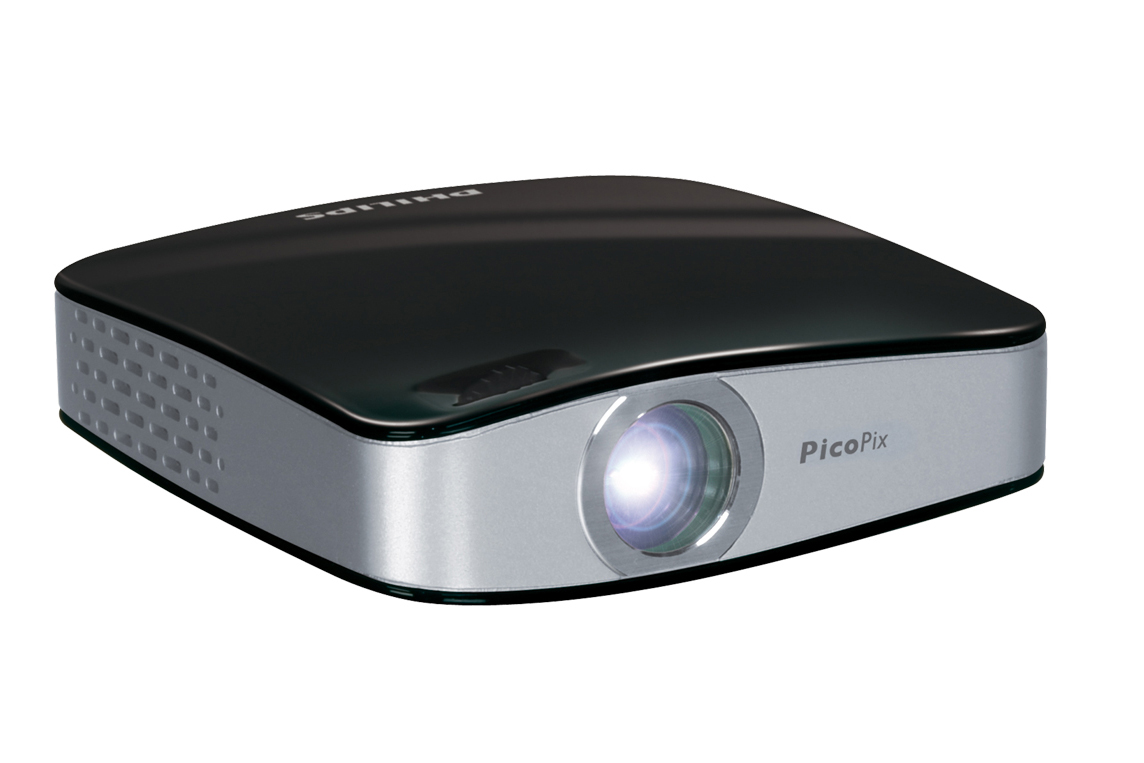Philips PicoPix PPX1020 review
A handheld projector for just £162 - a bargain or a false economy? Jim Martin takes a closer look in our review.

Reasonably cheap compared to the competition, but it also lacks features and can only be used with a PC or laptop. Image quality isn’t bad, but it’s ruined by flicker, the rainbow effect and severe tearing in videos. The Samsung SP-H03 costs a little more, but is superior in every other way.
Handheld projectors have been around for several years, and Philips' new PicoPix is a third-generation LED-based device. With a rated brightness of just 20 lumens, it isn't the brightest we've seen, but is just about on a par with its competition, including Samsung's SP-H03. Although the resolution is relatively low at 800x600, it's a step above most pocket projectors. The PPX1020 is convenient, too, since it requires only a USB cable for power and data.
It's about the size of a coaster and only 22mm thick. There's no keystone correction, which is odd considering the flip-out foot for raising the front up slightly. The resulting image is only marginally skewed, but you're better off attaching it to the bundled mini tripod using the screw mount underneath since most tables or office desks are too low to project an image high enough.
Unlike the Samsung SP-H03 and other pico projectors that have a DMD (digital micromirror device), the PPX1230 has a Liquid Crystal on Silicon (LCoS) chip. It relies on the same red, green and blue LED light source which cycles quickly between the three colours to create the impression of a full-colour image.
Unfortunately it isn't quick enough, and the resulting rainbow effect was the worst we've seen from any projector. It wasn't noticeable just in high-contrast scenes (where many single-chip DLP projectors show their weakness), but also occasionally in full-colour images. This became highly irritating and the relatively slow cycle speed also made the image appear to flicker.
Colours were very oversaturated, and as there are no image controls whatsoever, there's nothing you can do about this. Although you're unlikely to notice it, the backlight is uneven and our test unit had a bright spot in the top-right corner.
Get the ITPro daily newsletter
Sign up today and you will receive a free copy of our Future Focus 2025 report - the leading guidance on AI, cybersecurity and other IT challenges as per 700+ senior executives
-
 LockBit ransomware group falls victim to hackers itself
LockBit ransomware group falls victim to hackers itselfNews A data leak has revealed negotiations with victims, along with Bitcoin wallet addresses, affiliate accounts and details of attacks
By Emma Woollacott Published
-
 AI-powered banking fraud on the rise – but financial institutions are fighting back
AI-powered banking fraud on the rise – but financial institutions are fighting backNews Banks are increasingly using AI to combat scams, but say that the need for good data management can make progress slow
By Emma Woollacott Published
-
 ESET targets partner profitability with new MDR bundle
ESET targets partner profitability with new MDR bundleNews The security firm's managed detection and response services and products are now available as part of a single SKU to enhance the partner sales process
By Daniel Todd Published